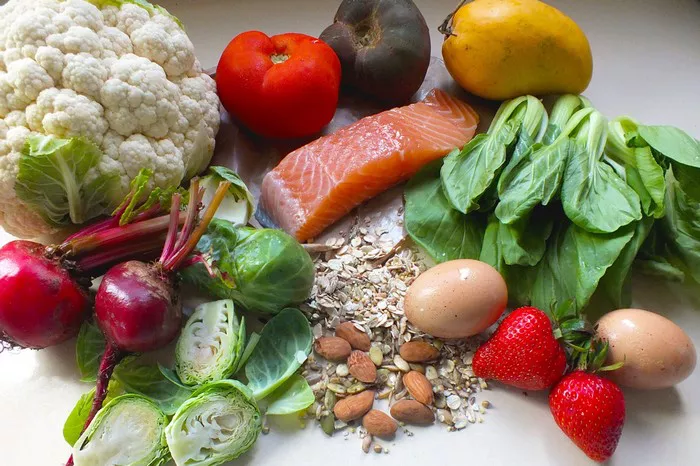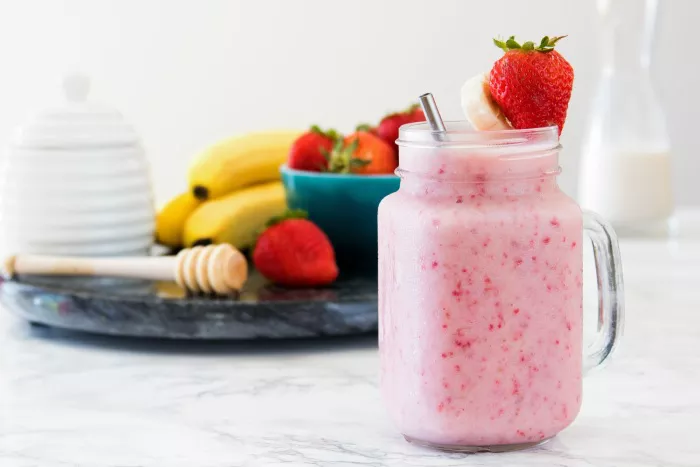Losing weight is a common goal for many people looking to improve their health and well-being. While exercise plays a crucial role, the foundation of successful weight loss is a well-balanced diet. The right combination of foods can help you achieve your weight loss goals by boosting metabolism, controlling appetite, and providing essential nutrients. In this comprehensive article, we’ll explore the best foods to incorporate into your diet to help you lose weight effectively and sustainably.
The Power of Protein for Weight Loss
Protein is a key player in the quest to lose weight. It is known for its ability to increase feelings of fullness and boost metabolism, making it an essential component of any weight loss plan. Including the right sources of protein in your diet can help you shed pounds more effectively.
Lean sources of protein, such as chicken breast, turkey, fish, lean beef, and tofu, are excellent choices for weight loss. These foods are low in unhealthy fats while providing a good dose of muscle-preserving protein. Plant-based protein sources like lentils, beans, and chickpeas are also great options for those following a vegetarian or vegan diet.
By including protein-rich foods in your meals and snacks, you can help regulate your appetite, reduce cravings for unhealthy snacks, and support muscle growth, all of which are essential for losing weight.
The Fiber Factor in Weight Loss
Fiber is another weight loss ally, as it contributes to a feeling of fullness and aids in digestion. High-fiber foods are typically low in calories and provide essential nutrients, making them a valuable addition to your diet when you want to shed pounds.
Fruits and vegetables are rich sources of dietary fiber. Incorporate a variety of colorful vegetables, such as spinach, broccoli, carrots, and bell peppers, into your meals to boost your fiber intake. Fruits like apples, berries, and pears are also high in fiber and can satisfy your sweet cravings in a healthy way.
Whole grains like oats, quinoa, and brown rice are excellent sources of complex carbohydrates and fiber. They release energy slowly, helping to stabilize blood sugar levels and prevent hunger spikes. Including these grains in your diet can help you feel fuller for longer and avoid overeating.
Healthy Fats for Weight Loss
Contrary to popular belief, not all fats are bad for weight loss. In fact, healthy fats are essential for maintaining overall health and can be a valuable tool in your weight loss journey.
Avocado, for example, is a nutrient-dense source of healthy monounsaturated fats. These fats can help reduce hunger and improve feelings of fullness. Incorporating avocado into your salads, sandwiches, or smoothies can add a creamy texture and healthy fats to your meals.
Nuts and seeds, such as almonds, walnuts, and chia seeds, are packed with healthy fats, fiber, and protein. They make for convenient and satisfying snacks that can help curb your appetite and promote weight loss when consumed in moderation.
Fatty fish like salmon, mackerel, and trout are rich in omega-3 fatty acids, which have been shown to aid in weight loss by reducing inflammation and improving insulin sensitivity. Including fish in your diet a few times a week can be a beneficial addition to your weight loss plan.
The Role of Portion Control
While the quality of the food you consume is important, so is the quantity. Portion control is a fundamental aspect of any successful weight loss strategy. Even the healthiest foods can contribute to weight gain if consumed in excessive amounts.
One useful method for managing portion sizes is to use smaller plates, bowls, and utensils. This creates the illusion of a fuller plate and can help control overeating. Additionally, measuring your food using kitchen scales or measuring cups can provide a more accurate understanding of portion sizes.
Practicing mindful eating is another effective way to control portion sizes. Paying attention to hunger cues, eating slowly, and savoring each bite can help prevent overindulgence. It’s important to distinguish between physical hunger and emotional eating, as many people eat in response to stress, boredom, or other emotions rather than true hunger.
Hydration and Weight Loss
Staying hydrated is often overlooked but plays a crucial role in weight loss. Water is essential for many bodily functions, including metabolism and digestion. Drinking enough water can also help control appetite and prevent overeating.
Before each meal, try drinking a glass of water. This can help you feel fuller and may lead to smaller portion sizes. Additionally, when you think you’re hungry between meals, try drinking a glass of water first, as thirst is often mistaken for hunger.
The Benefits of Low-Calorie Vegetables
Certain vegetables are incredibly low in calories while being high in essential nutrients and fiber. These low-calorie vegetables are fantastic additions to your weight loss diet, as they allow you to fill up on bulk without consuming excessive calories.
Leafy greens like spinach, kale, and arugula are some of the lowest-calorie vegetables available. They are packed with vitamins, minerals, and antioxidants, making them a nutritious choice for weight loss.
Cruciferous vegetables like broccoli, cauliflower, and Brussels sprouts are also low in calories and provide a satisfying crunch. They are rich in fiber and have been shown to support weight loss and reduce belly fat.
Zucchini, cucumber, and lettuce are examples of water-rich vegetables that can help keep you hydrated and promote a feeling of fullness with minimal calorie intake.
The Impact of Sugar on Weight Loss
Excess sugar consumption is a major contributor to weight gain and various health problems. Sugary foods and beverages can cause blood sugar spikes and crashes, leading to increased hunger and cravings.
To support your weight loss efforts, limit your intake of sugary foods and beverages, including sugary sodas, candies, and desserts. Instead, opt for naturally sweet foods like fresh fruits, which provide vitamins, fiber, and antioxidants in addition to sweetness.
When it comes to sweetening your drinks or recipes, consider using natural alternatives like stevia, erythritol, or monk fruit. These sugar substitutes have minimal impact on blood sugar levels and can help reduce your overall sugar intake.
Reading food labels is essential for identifying hidden sugars in processed foods. Look for terms like high fructose corn syrup, cane sugar, and sucrose, and be mindful of the sugar content in packaged products.
The Importance of Regular Exercise
While this article focuses on the best foods for weight loss, it’s important to remember that diet alone is not the only factor in achieving your weight loss goals. Regular physical activity is a crucial component of a healthy lifestyle and can greatly enhance your weight loss efforts.
Incorporate a mix of cardiovascular exercise, strength training, and flexibility exercises into your routine. Cardiovascular activities like walking, running, cycling, or swimming help burn calories and improve overall fitness. Strength training builds lean muscle mass, which can increase metabolism and aid in fat loss. Flexibility exercises like yoga or stretching can improve mobility and reduce the risk of injury.
Consistency is key when it comes to exercise. Aim for at least 150 minutes of moderate-intensity aerobic activity or 75 minutes of vigorous-intensity aerobic activity per week, along with muscle-strengthening activities on two or more days per week.
Conclusion
Losing weight is a journey that requires dedication, patience, and a well-thought-out plan. While there is no one-size-fits-all approach to weight loss, incorporating the best foods for your goals can be a powerful strategy.























